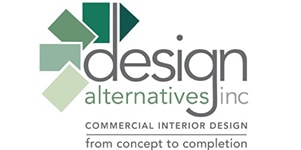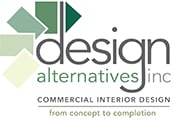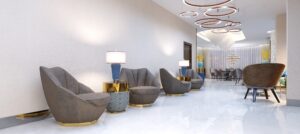Why You Should Hire a Design Professional
A commercial interior design professional is a consultant who listens, understands your needs, and can deliver a beautiful, fully utilized space that meets your goals. They can transform a variety of spaces including, but not limited to: offices, schools, hotels, restaurants and retail shops. When you hire a design professional, they create clean and safe office spaces for employees to work effectively and efficiently. They create recreational and hospitality spaces for people to have more fun, fully relax and enjoy their dining experiences. If your office, clubhouse or shared space requires a renovation or update, it should be a priority to work with a full-service design professional who can design, manage and oversee the entire project from start to finish.
Here are some insightful tips on why a full-service design professional is a must-have for your next renovation project.
Design Concept & Evaluate Space: How to go from design inspiration to completed project
When working with a designer they know how to keep your brand in mind to fit the space. The design professional meets your goals by updating, repositioning and making better use of the space. Therefore, they might even come up with some ideas or alternatives that you did not think were possible.
The designer provides inspiration through selecting the right color, textures and finishes to achieve the desired look and feel of the room or space.
Evaluate Products & Materials
The design professional is well-versed in various products, materials and product lines including but not limited to: flooring, walls, fabrics, carpets and furniture. So, rest assured they will select the appropriate materials and features that will properly suit your space and budget. They are knowledgeable about furniture, fixtures and equipment, otherwise known as FF&E packages. When constructing a new build or renovating an existing space, the furniture and other subsidiary items will often be separated into their own package. For more information on some of the products and brands Design Alternatives can provide, please visit: Shaw Floors.
Codes and Requirements
They are also knowledgeable about codes and requirements on all kinds of products, including: flooring, carpets, fabrics, window treatments, and other products.
A design professional knows the right materials for the right space and how they will match and align when the project is complete. They seamlessly incorporate design concept, material knowledge, purchasing while managing the project until completion.
In addition, they are able to better source materials for optimal pricing. It helps when they are a certified representative for certain products and brands, as the customer you are able to take advantage of those sources and cost savings passed on to you.
Project Management: Scheduling, Logistics & Purchasing Materials
Next, it is important that your design professional also knows how to manage the project once it is underway. This includes scheduling subcontractors, logistics and purchasing materials. The designer understands the order in which certain aspects of the project should be completed. In addition, they can coordinate the delivery of materials according to the project schedule. Also, they can oversee the project to make sure items are installed properly and the team is staying on schedule.
They can Coordinate Work in an Occupied Space
Most of the time, a renovation must be completed while the space or building is still occupied. When the time comes to renovate a busy, occupied space, this poses a set of challenges that should be handled by a professional. They know exactly how to stage materials and other items and schedule work to ensure the safety of the tenants or residents while assuring the client that the work will be completed on time and with little to no issues.
They Create and Design Functional Spaces
The designer can help you determine the function and the layout of the room. Next, they can implement plans to make the best use of the space and use the proper colors, materials and textures to improve it and truly make it your own. Eliminating wasted space and getting the most use out of every square foot is crucial. Your designer can help you evaluate the current, under-utilized space and transform it into a fully functioning space.
The best commercial interior space facilitates the human behavior intended to take place there. All while helping the company to achieve its bottom-line goals. Professional commercial interior designers accomplish this by focusing on five key design elements: access, comfort, privacy, flexibility, function, and safety.
Access
How is the space set up?
The occupants should be able to find their way around the space with ease. Access for people with disability and ADA compliance.
Comfort: The designer can help achieve the level of comfort your space is meant to have. For example, if this is meant to be a cozy space, they might incorporate soft textures, comfortable seating and adjustable low lighting to facilitate rest and relaxation. On the contrary, if this a workspace that needs to sustain an effective work team, they can incorporate brighter lighting with occupancy sensors and multiple workstations with ergonomic furniture to ensure productivity.
Privacy: The designer can help you achieve as much privacy or openness as desired.
Flexibility means incorporating multiple functions in one space. Maybe you have a large ballroom that can be divided into multiple rooms to split up different meetings and events. Perhaps you own a growing company that needs to move into a bigger space and want to continue to support that growth by being able to install more workspaces, cubicles, desks and conference rooms in the future.
Function: Does the space function adequately for the tasks performed in the space?
Safety: Critical to the success of the design and project.
They are up-to-date on Design Trends
The designer is forward thinking, meaning they incorporate a design that keeps with current and future trends and demands. For example, the style and features might be old and outdated by the time you finish the project. Thus, the design professional helps to eliminate this issue. A big trend is: How to update the technology in your building.
They Stay on Schedule and Budget
Finally and most importantly, you want your space to be designed and delivered on time and within the proposed budget. Your designer will work with you to make sure you are able to get positive results within an agreed upon budget.
In conclusion, when you are shopping around for the right vendor to successfully design and manage your renovation project, you want to make sure they incorporate the right design elements that work with your goals and can successfully manage your project from start to finish. Should you need a designer to help you plan and coordinate your facility’s next renovation, call Design Alternatives today 732.244.7778 or visit our Contact Page to request a proposal.



